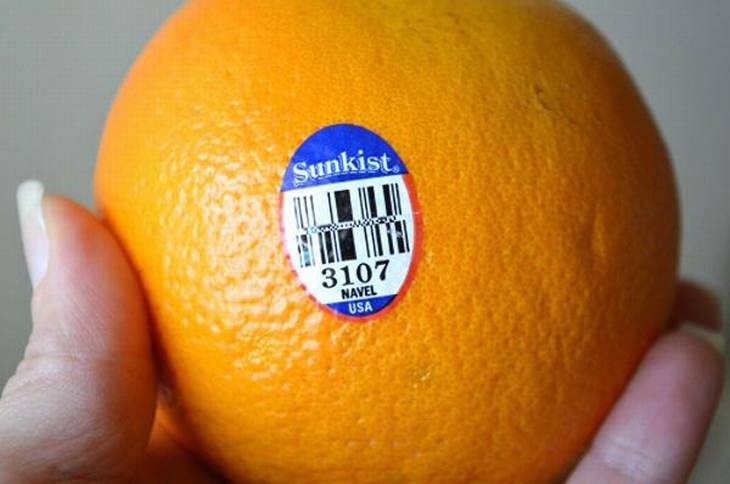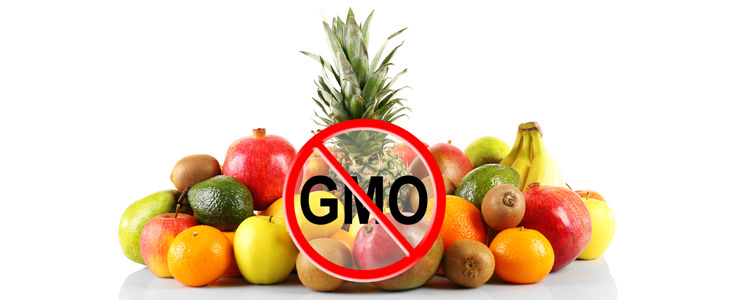
If you're a good observer, you may have realized that the fruit you buy has numbers labeled on it. These numbers are called PLU codes, and they hold a great deal of information about how a fruit was produced, such as whether it is organic, conventionally grown, or genetically modified, along with other important information that should be of interest to the buyer. Let us help you demystify these codes, so you can rightfully become more knowledgeable about the products you are buying.
First of all, what are PLU codes?

PLU stands for "Price Lookup", and it refers to the code that you find on the little stickers affixed to fruits and veggies available at grocery stores and supermarkets. Each code is intended to deliver information to the cashiers to know what price they should charge the buyers. Apples, for instance, come in many varieties, and thanks to their PLU codes, the cashier is able to tell one from the other. Besides the cashier, you (the buyer) also have the right to know what these codes reveal.
The meaning of PLU codes

PLU codes normally consist of four or five digits, and depending on the digits they begin with, they can reveal different information about the way the fruit was grown. Here's what it means in the following cases:
• A five-digit code beginning with a "9": This signifies that the product is organic - meaning that the farmers who grew it used natural farming techniques such as crop rotation, green manure, compost, and biological pest control. You are likely to find this kind of produce being sold in organic sections at supermarkets or at chain health-food stores. For example, in the U.S., 94033 is used for small organic lemons and 94053 for large organic ones.
• A four-digit code beginning with a "3" or a "4": This indicates that the produce is probably conventionally grown, meaning that its growth involved the use of fertilizers and pesticides that help the farmers attain a higher fruit yield, out of season growth, more longevity, more resistance and more mass. There are numerous variations of this kind of code. For example, in the U.S., 4033 is used for small lemons and 4053 for large ones.
• A five-digit code that starts with an "8": This means that the product is a GMO (Genetically-Modified Organism) - but unfortunately, you won't see this very often, if at all.
Why are PLU Codes not always reliable?
Firstly, it's important to know that PLU codes are not mandatory, so it's not always possible for us to tell how certain produce is grown. Secondly, companies sometimes mislabel the produce to hide actual facts, in turn misleading us completely. Of course, they do this for the benefit of their sales - especially since most Americans say that they would avoid GMOs if they were labeled, which leaves no concrete reason for companies to do so.
Genetically modified fruits and vegetables are undeniably frowned upon, and although 60-70 percent of food contains ingredients of this type, we are not informed well enough about their presence, as well as the long-term effects they have on our health. And what's worse is that there seems to be little to no regulation enforcement in regards to the correct labeling of such products.
How can I avoid GMOs?

Although there is no direct research showing health hazards by GMOs. Companies may hide the fact that their products have been genetically modified. But on the other hand, others may boast that theirs aren't. Knowing about these companies is a great option to certify that the products you buy are GMO-free.
And if you're still doubtful about that, then you should know about the most reliable ways to tell this:
• The "USDA CERTIFIED ORGANIC" label: This label is certified by the USDA (The United States Department of Agriculture), a department that conducts professional research on food, agriculture and nutrition. Finding this label means that the use of GMOs were completely prohibited in the production of the produce, and that it is organic. The USDA calls for tangible proof from each company before the labeling is officially given. This doesn't only apply to fruits and vegetables, but any products that may include traces of GMOs.
• "NON-GMO" labels: This label is certified by the Non-GMO Project, a non-profit organization that offers verification and labeling for non-GMO foods and products in North America. Their mission involves working hand-in-hand with food manufacturers, distributors, growers and seed suppliers to be able to identify whether they make use of GMOs or not. They also help create awareness of GMOs and their impact on our health and food systems.
Other ways to avoid buying GMO foods:
• Avoid buying products such as corn, soy and canola that are not specifically labeled as non-GMO.
• Get informed about common aliases for products, for example maize or hominy for corn.
• Buy ingredients, instead of food with ingredients.
• Cook food from scratch.
• Opt for shopping at local farmers' markets over grocery shopping.
• Buy and preserve food that is in season. It's more likely to be genetically-modified if it's bought out of season.
• Grow your own crops.
H/T: healthyandnaturalworld.com
Cover image by depositphotos.com